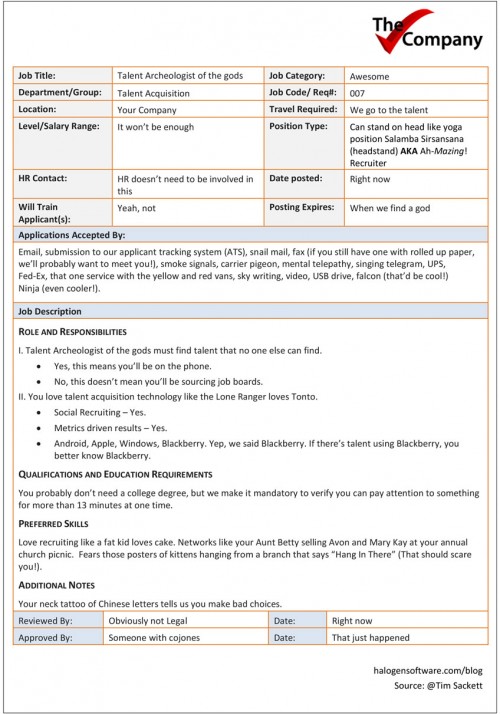If I get 100 Talent Acquisition Pros in a room (no this isn’t going to be a dead lawyer joke) and ask them if it is ‘ethical’ to recruit each others employees, about half will say ‘No’. In fact, there are even a number who will say, “we have an agreement to not recruit from each other”! I’ve heard this, out in the open, with no restraint. It’s normal practice in the corporate world. It’s very common to hear inside Talent Acquisition departments say they don’t ‘actively’ recruit from each other because they’ve been told not to by their executives. That type of conversation will soon be a thing of the past, although, I doubt highly the activity will be!
From SHRM on the highly publicized lawsuit of many of Silicon Valley’s largest tech companies who ‘conspired’ to not recruit employees from each other:
“From 2005 to 2009, the leaders of Northern California’s largest and most powerful companies agreed to reduce competition for workers by entering into an interconnected web of secret, bilateral agreements not to solicit—‘cold call’—each other’s workforces,” the plaintiffs allege.
“By shielding their employees from waves of recruiting, defendants not only avoided individual raises, they also avoided having to make across-the-board pre-emptive increases to compensation,” the plaintiffs claim.
Agreements among the companies to refrain from the common recruiting practice of cold-calling each other’s employees deprived workers of information regarding pay packages that they could have used to find higher-paying work or to negotiate for higher salaries with their existing employers, according to the lawsuit.”
That’s right Talent Acquisition Pros it’s actually illegal to say you won’t actively recruit from your competition because you’ve agreed between each other not do it. I get it, I get why you do this. Having a hot job market and constantly taking talent and losing to each other seems like a never ending treadmill of work, but that’s the life of a Recruiter. You know there are ways to stop this from happening. Pay better. Engage better. Develop talent better. Have a vision that is real and share it. It’s the age old business conundrum, do you want to pay on the front side or the back side. Reactionary companies end up paying on the back side – more money in wages to attract talent because they turnover people who leave for better companies, more wages, etc. It eventually catches up.
Other companies pay up front and keep their talent by paying at market or above, then constantly evaluating the market and changing pay whenever it’s needed without having employees ask, or have to leave to get paid fairly. They develop talent from within and spend the money to do it right, giving themselves an internal pipeline. They make sure to only allow people into leadership positions who are engaging and visionary. It’s a lot of work, and costs money, but in the end it’s still cheaper and you have a better company.
I would actually love to see legislation that makes it illegal if you’re a corporate recruiter and you don’t make cold calls to recruit! You saying you’re a ‘Recruiter’ but you don’t actually recruit! That’s the real criminal activity going on!

